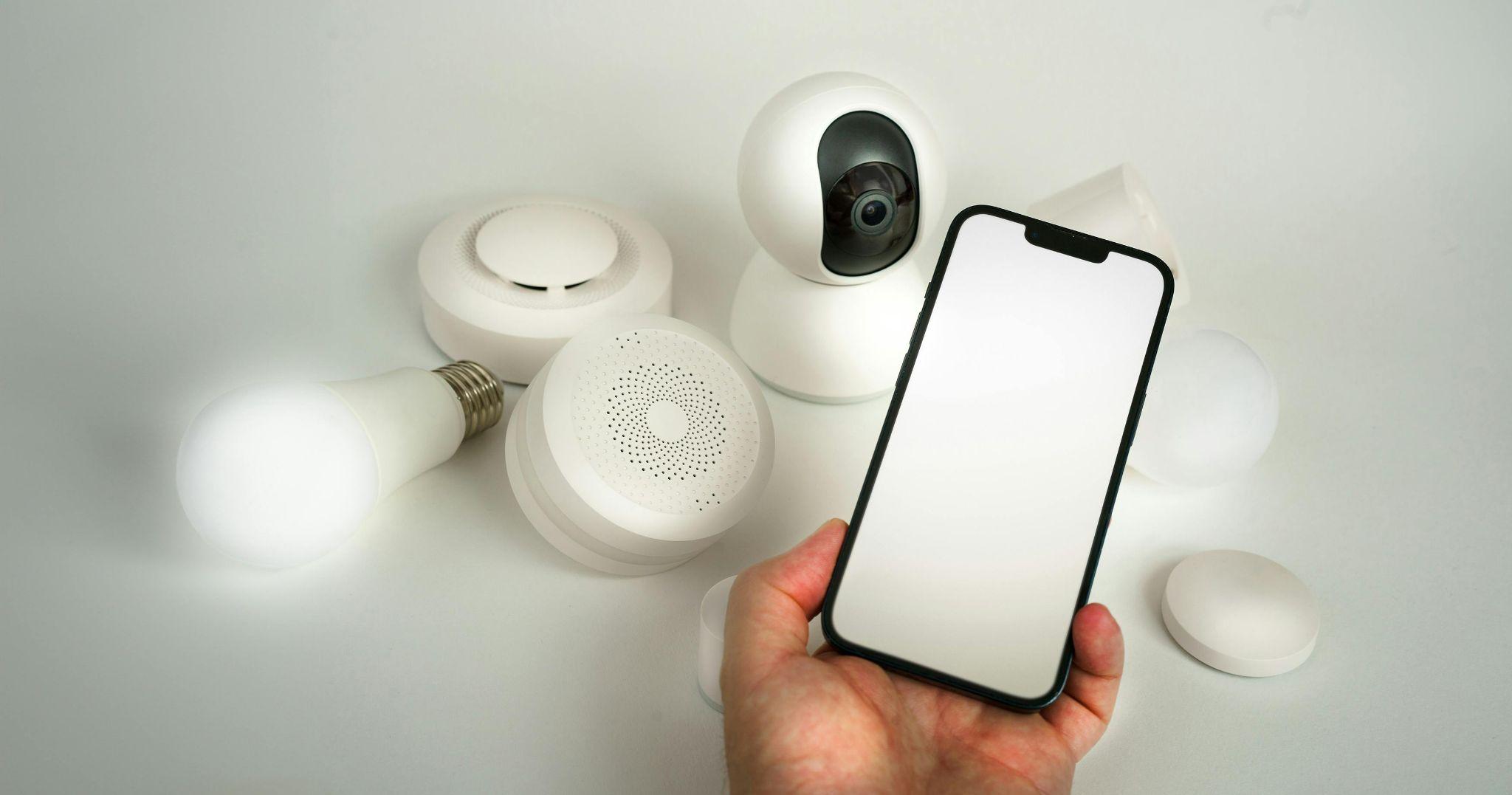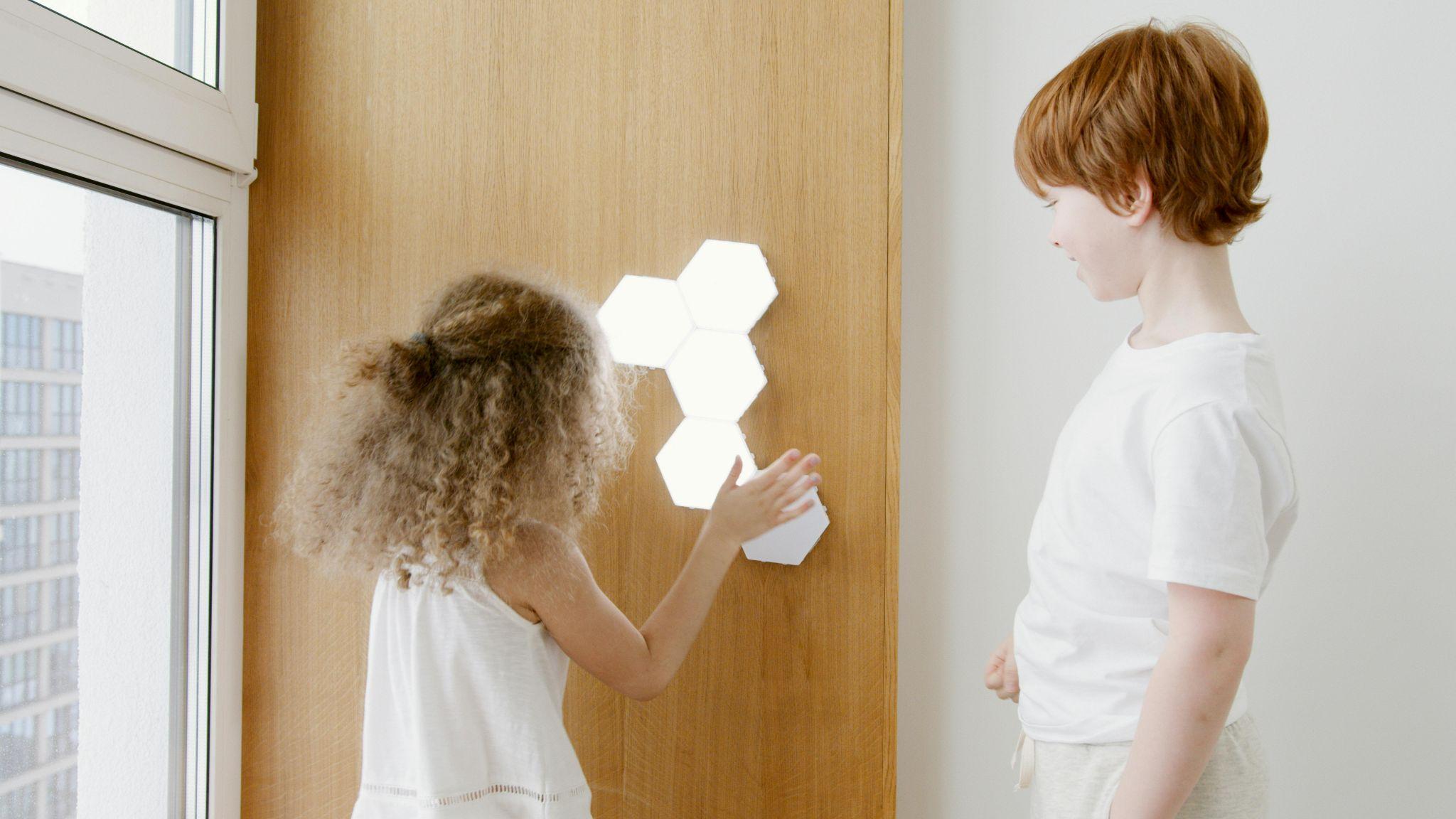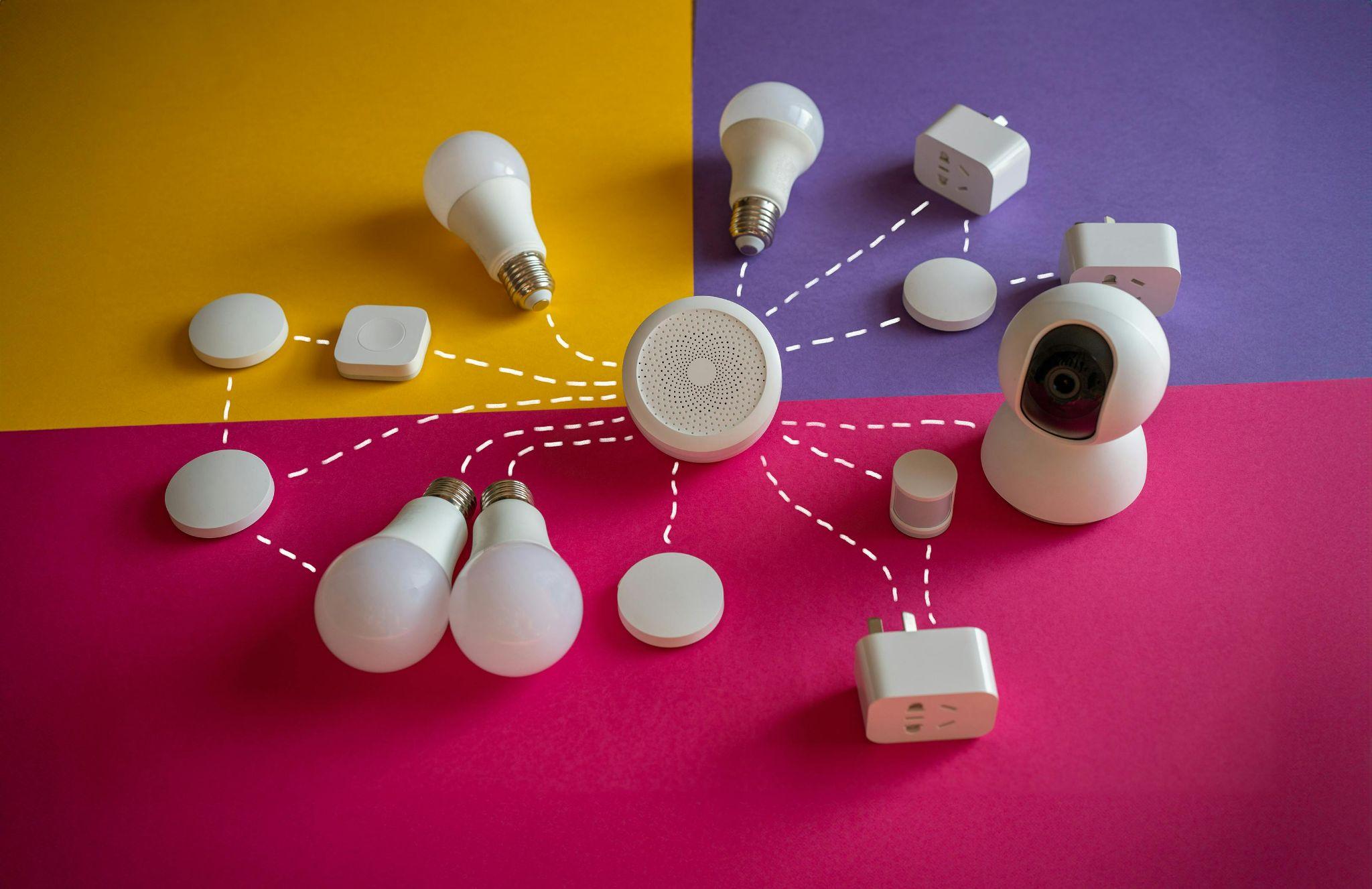Transform your living space with intelligent illumination that responds to your lifestyle. Learning how to integrate smart lighting into your home opens doors to unprecedented control over ambiance, energy efficiency, and daily convenience—creating an environment that adapts seamlessly to your needs throughout the day.
Understand the Smart Lighting Ecosystem
Smart lighting represents a fundamental shift in home illumination, where traditional switches give way to interconnected systems that communicate through wireless protocols. Modern smart lighting ecosystems consist of interconnected devices that work together to create responsive, automated environments. The emergence of universal standards like Matter has revolutionized compatibility, ensuring devices from different manufacturers can communicate effectively within a single network.
Key Components: Bulbs, Switches, Hubs, and Plugs
Every smart lighting system relies on four essential components that work in harmony to deliver intelligent illumination. Smart bulbs serve as the foundation, offering features like dimming, color changing, and wireless control. Smart switches provide wall-mounted control while maintaining compatibility with existing fixtures. Hubs act as central command centers, coordinating communication between devices and enabling advanced automation. Smart plugs extend functionality to traditional lamps and fixtures, bringing legacy lighting into the smart ecosystem.
| Component | Description | Primary Benefit |
|---|---|---|
| Smart Bulbs | LED bulbs with built-in wireless connectivity and advanced features | Direct replacement for existing bulbs with color and dimming capabilities |
| Smart Switches | Wall-mounted controls that replace traditional light switches | Control multiple fixtures while maintaining physical switch access |
| Smart Hubs | Central controllers that coordinate device communication | Enable complex automation and cross-device integration |
| Smart Plugs | Outlet adapters that add smart functionality to any plugged device | Convert traditional lamps into smart lighting without rewiring |
Interoperability and the Rise of Matter
Cross-brand compatibility eliminates the frustration of vendor lock-in, allowing homeowners to choose the best devices regardless of manufacturer. Matter protocol has emerged as the solution to fragmentation, creating a unified language that enables seamless communication between brands like Philips Hue, LIFX, and Amazon Echo.
Matter’s revolutionary benefits include:
- Universal control across all compatible devices through a single app or voice assistant
- Local automation that functions without internet connectivity for reliable performance
- Broad platform support ensuring compatibility with Apple HomeKit, Google Home, and Amazon Alexa simultaneously
Planning Your Smart Lighting Transformation
Strategic planning forms the foundation of successful smart lighting integration, determining how effectively your system will serve daily routines and long-term needs. Thoughtful consideration of room layouts, control preferences, and user experience ensures maximum satisfaction and functionality. Proper planning prevents costly mistakes and creates a cohesive system that grows with your evolving requirements.
Assess Your Home Lighting Zones
Evaluating your home’s distinct lighting zones reveals opportunities for customized control and automation. Each area serves different purposes throughout the day, requiring tailored lighting solutions that enhance functionality and comfort. Consider traffic patterns, natural light availability, and specific activities when determining zone requirements.
| Zone | Suggested Smart Functionality | Key Features |
|---|---|---|
| Living Areas | Multi-scene control with dimming and color temperature | Entertainment modes, reading brightness, social ambiance |
| Kitchen | Task-focused lighting with motion sensors | Under-cabinet illumination, prep area brightness, dining scenes |
| Bedrooms | Circadian rhythm support with gradual transitions | Wake-up simulation, bedtime dimming, partner-independent control |
| Bathrooms | Motion-activated safety lighting | Nighttime navigation, grooming brightness, humidity considerations |
| Outdoor Spaces | Security-focused automation with weather resistance | Motion detection, scheduled activation, landscape accent lighting |
Select the Right Control Method
Control preferences vary significantly among household members, making flexible options essential for widespread adoption. Voice assistants provide hands-free convenience during cooking or when carrying items. Mobile apps offer detailed customization and remote access capabilities. Physical switches ensure reliability and accommodate guests unfamiliar with smart systems.
Control method benefits include:
- Voice commands for instant adjustments without interrupting activities or searching for devices
- Automated schedules that align lighting with daily routines and seasonal changes
- Physical backup controls ensuring functionality during network outages or for less tech-savvy users
Choosing Smart Lighting Devices That Work for You

Device selection determines your system’s capabilities, reliability, and future expansion possibilities. Understanding communication protocols, feature sets, and ecosystem compatibility prevents compatibility issues and ensures optimal performance. Quality devices from reputable manufacturers provide better longevity and customer support when issues arise.
Protocols and Ecosystems: Wi-Fi, Zigbee, Thread, Bluetooth
Different wireless protocols offer distinct advantages depending on home size, network infrastructure, and performance requirements. Wi-Fi provides broad compatibility but may strain network bandwidth with numerous devices. Zigbee creates robust mesh networks ideal for large installations. Thread offers low-latency communication perfect for responsive lighting. Bluetooth suits simple setups with minimal automation needs.
| Protocol | Range | Latency | Hub Requirement | Energy Usage |
|---|---|---|---|---|
| Wi-Fi | Whole home | Medium | No | High |
| Zigbee | Extended mesh | Low | Yes | Low |
| Thread | Mesh network | Very low | Yes | Very low |
| Bluetooth | Limited | Medium | No | Medium |
Features That Add Value: Color, Dimming, Routines, Synchronization
Advanced features transform basic lighting control into immersive experiences that enhance daily life. Color-changing capabilities create mood lighting for entertainment and relaxation. Dimming functionality supports circadian rhythms and energy conservation. Automation routines eliminate manual adjustments while ensuring perfect lighting for every occasion.
Popular smart lighting features include:
- Circadian rhythm synchronization that adjusts color temperature throughout the day for better sleep
- Entertainment sync that pulses with music or matches on-screen colors for immersive experiences
- Geofencing automation that welcomes you home with perfectly lit spaces upon arrival
Installation: From Setup to Smart Scenes
Installation success depends on methodical approaches that ensure proper device pairing and network integration. Most smart lighting devices follow similar setup procedures, though specific steps vary by manufacturer and protocol. Taking time to properly configure each device during installation prevents connectivity issues and ensures reliable operation.
Device Setup and Hub Integration
Physical installation typically mirrors traditional lighting replacement, with smart features activated through mobile apps or web interfaces. Modern devices prioritize user-friendly pairing processes that guide users through each step. Proper hub integration establishes the communication foundation that enables advanced features and cross-device coordination.
- Select appropriate devices based on fixture compatibility and desired features
- Install hardware following manufacturer guidelines for electrical safety
- Pair devices using the designated app or hub interface for network connection
- Name and organize devices with intuitive labels that reflect their location and function
- Test functionality to verify proper operation before proceeding to automation setup
Create Custom Lighting Scenes and Schedules
Lighting scenes transform spaces instantly, adapting illumination to match activities and moods. Effective scenes consider color temperature, brightness levels, and which fixtures participate in each setting. Scheduling automation ensures lights respond predictably to daily routines without manual intervention.
Scene and scheduling possibilities include:
- Morning energizer routines that gradually increase brightness and shift to cool white tones
- Evening wind-down sequences featuring warm colors and gentle dimming over 30-60 minutes
- Security presence simulation that varies lighting patterns when away to deter potential intruders
Maximize Benefits: Ambiance, Security, Wellness

Smart lighting’s true value emerges through thoughtful application of its advanced capabilities beyond simple on-off control. Properly configured systems enhance psychological well-being through circadian support while providing practical benefits like deterring break-ins and reducing energy consumption. These multifaceted advantages justify the investment through improved quality of life and long-term savings.
Enhance Ambiance and Daily Routines
Customized lighting transforms ordinary spaces into dynamic environments that support productivity, relaxation, and entertainment. Color psychology plays a crucial role in mood regulation, with warm tones promoting relaxation and cool tones enhancing focus and alertness. Smart lighting makes these adjustments automatic, responding to time of day, weather conditions, or specific activities.
Daily routine enhancements include:
- Productivity lighting with bright, cool white illumination that improves concentration during work hours
- Relaxation modes featuring soft, warm colors that signal the body to prepare for rest
- Entertainment synchronization that creates immersive experiences by matching lighting to music or video content
Boost Home Security and Energy Efficiency
Automated lighting serves as an effective security measure while reducing energy waste through intelligent scheduling and occupancy detection. Random lighting patterns during absence create the illusion of occupancy, deterring potential intruders who typically target obviously vacant homes. Motion sensors ensure lights activate only when needed, eliminating energy waste from forgotten switches.
| Scenario | Implementation | Security Benefit | Efficiency Benefit |
|---|---|---|---|
| Scheduled Presence | Random on/off patterns while away | Simulates occupancy to deter break-ins | Prevents lights left on unnecessarily |
| Motion Detection | Automatic activation in key areas | Illuminates unexpected movement | Lights activate only when spaces are occupied |
| Remote Monitoring | Real-time alerts and camera integration | Immediate notification of unusual activity | Manual override prevents energy waste |
Future-Proofing and Ongoing Management
Maintaining optimal smart lighting performance requires regular attention to software updates and system expansion planning. Technology evolves rapidly, with manufacturers regularly releasing firmware updates that add features, improve stability, and address security vulnerabilities. Proactive management ensures your investment continues delivering value as your needs change and new capabilities emerge.
Keep Firmware and Apps Updated
Regular updates maintain security, introduce new features, and ensure compatibility with evolving smart home standards. Manufacturers often release updates that improve device responsiveness, add new scene options, or enhance integration with popular platforms. Staying current with updates prevents security vulnerabilities and ensures access to the latest functionality.
Essential maintenance practices include:
- Monthly hub firmware checks to ensure access to latest features and security patches
- Quarterly automation testing to verify schedules and scenes function as intended after updates
- Annual compatibility reviews to confirm all devices remain supported and secure
Scale Smart Lighting as You Grow
Successful smart lighting systems anticipate future expansion, whether adding new rooms, outdoor areas, or integrating with other smart home technologies. Network capacity planning ensures reliable performance as device counts increase. Choosing devices that support emerging standards like Matter provides flexibility for future additions without compatibility concerns.
Growth strategy considerations include:
- Network bandwidth management to prevent congestion as device counts increase significantly
- Matter-certified device prioritization ensuring long-term compatibility and reduced vendor lock-in
- Configuration documentation maintaining records of scenes, schedules, and device settings for troubleshooting
Conclusion
Successfully integrating smart lighting into your home requires understanding ecosystem components, strategic planning of lighting zones, selecting compatible devices, and configuring thoughtful automations. This systematic approach ensures your investment delivers maximum value through enhanced comfort, improved security, and personalized illumination that adapts to your lifestyle.
Begin your smart lighting journey by identifying a single room for initial implementation, then create your first custom scene that demonstrates the technology’s potential. As you experience the convenience and flexibility of intelligent illumination, you’ll discover countless opportunities to enhance your living environment through the power of smart lighting integration.

